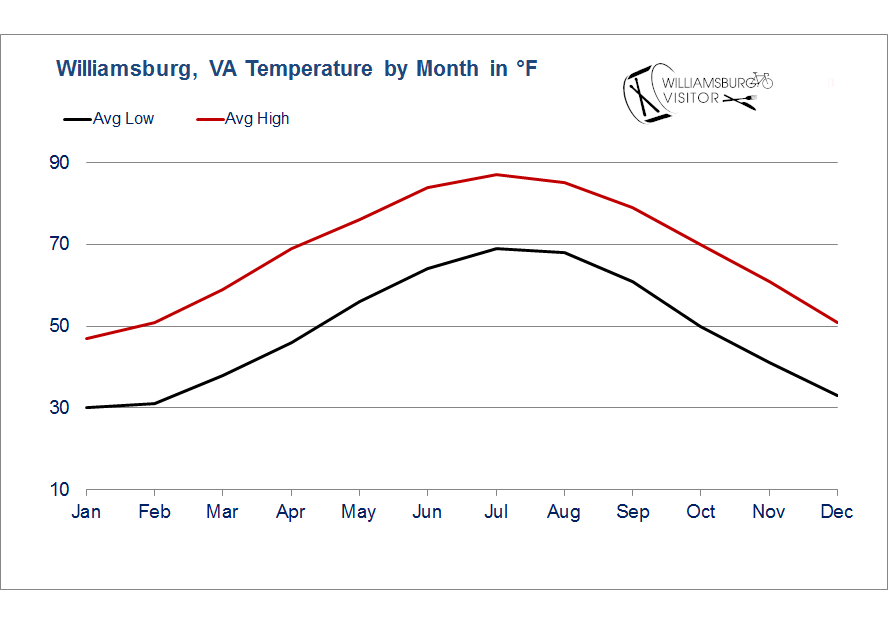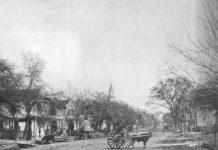Williamsburg Virginia’s Temperate Weather Surprises Many Visitors. The Historic Triangle region experiences four distinct seasons, but the average annual snowfall is never more than 7.0″ and the hottest day rarely exceeds 95°F. The warmest month of the year is July, while winter hits its peak in January.

June-August
The months between June and August are the busiest and hottest of the year in D.C. High average temperatures in the upper 80s are coupled with sticky humidity.
September-November
Average high temperatures fluctuate between the upper 60s and lower 80s, making this a pleasant time to visit. However as the locals know it can rapidly fluctuate. Pack for the highs but make sure to bring layers because the lows can slide into the 40s.
December-February
December is one of the highs for Williamsburg. Colonial buildings are adorned with festive decorations and the holiday vibe is everywhere. Temps are generally in the 40’s but there is definitely a chance for a cold rain. January and February make up the low season: Hotel prices are lower, but remember, so are the temperatures. Winters are freezing in Williamsburg – literally. Carry coat, hat, gloves, scarf and thermal underwear to help combat the temperatures, which generally hover in the, 30s and 40s.
Snowfalls in Williamsburg are usually fleeting, but spectacular. Seeing DOG Street (Duke Of Gloucester) draped in snow is something everyone should see at least once.
Williamsburg’s average temperature during winter is high enough to get in a round or two of golf or explore downtown Williamsburg’s unique locally-owned shops
It’s easy getting around Williamsburg and to the area’s many attractions during winter. Williamsburg has its own regional airport Newport News Williamsburg International Airport linked by a major highway 64, and the picturesque Colonial Parkway.
In the end Williamsburg is a great visit no matter what time of year earning a score of 63 out of 100 on SPERLING’S COMFORT INDEX A higher score indicates a more comfortable year-round climate. The US average for the comfort index is 54. The index is based on the total number of days annually within the comfort range of 70-80 degrees, and we also applied a penalty for days of excessive humidity.


























